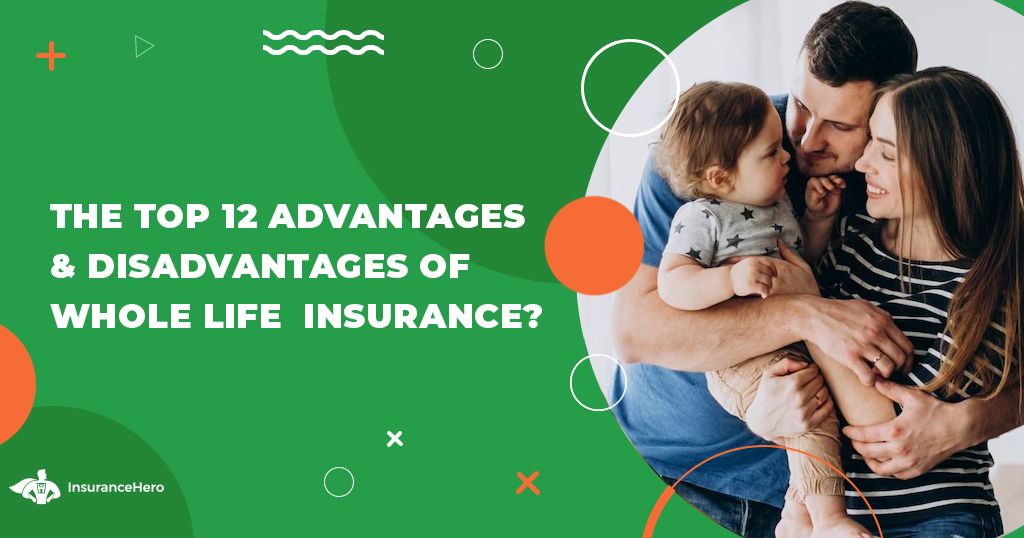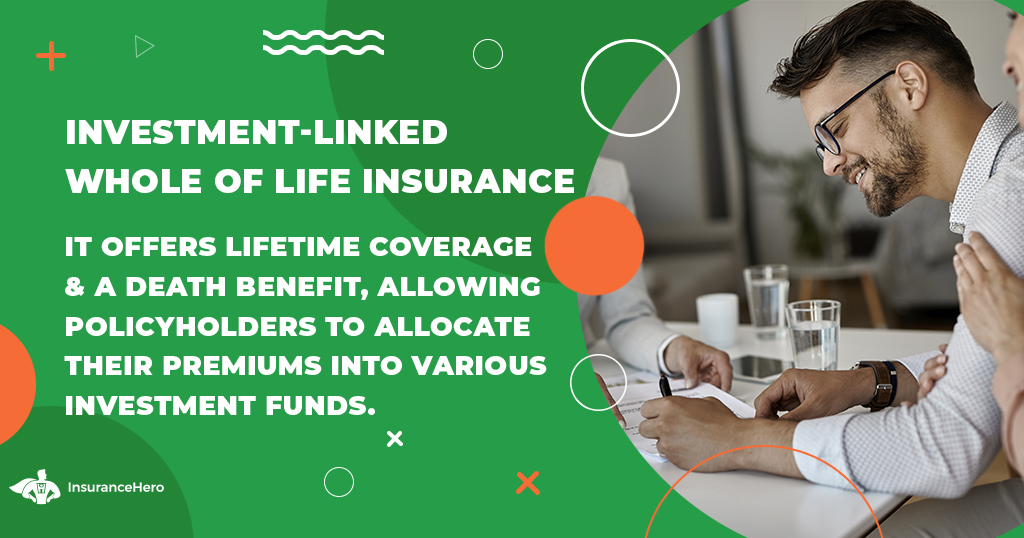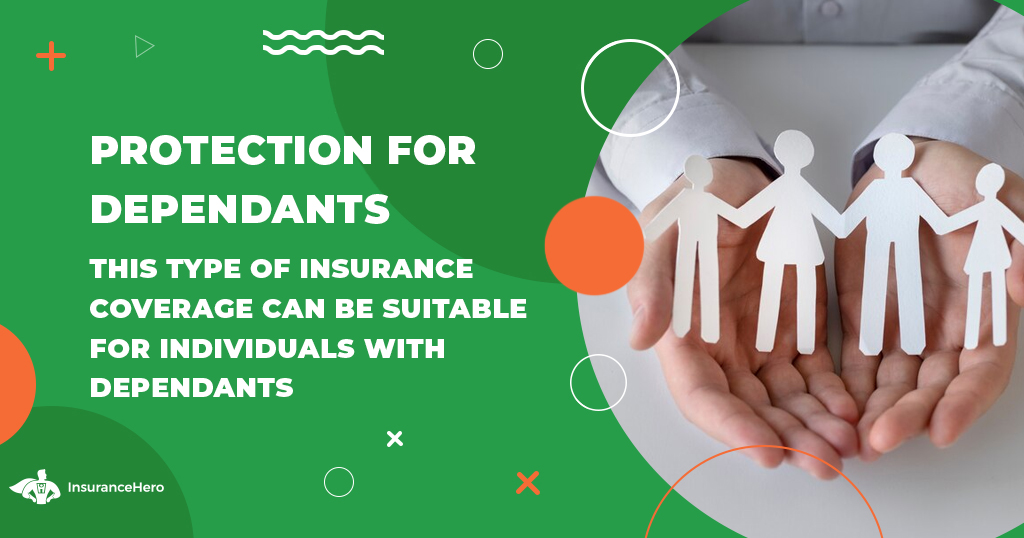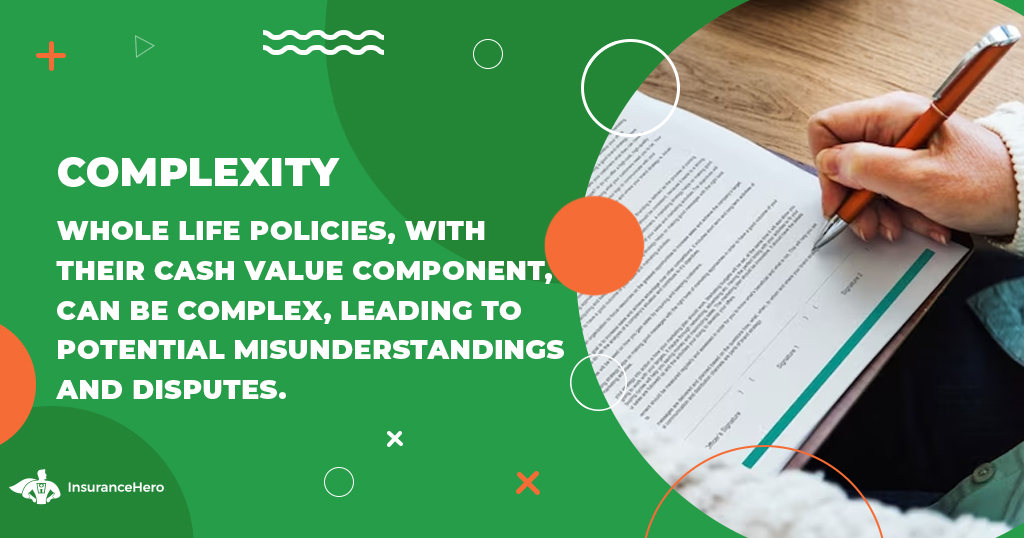Top 12 Benefits and Drawbacks of Whole of Life Insurance

For people with dependents, whole life insurance can be a valuable financial tool. This type of insurance can provide long-term financial protection for your loved ones while also serving as a powerful estate planning tool.
What exactly is whole of life insurance, though, and what different types of policies are available? What are the pros and cons of purchasing this type of insurance?
We will examine everything you need to know about whole life insurance in the UK.
What Is Whole of Life Insurance?
Whole of life insurance is a type of permanent life insurance policy that provides coverage for the entire lifetime of the insured individual.

Unlike term life insurance, which only covers a specified term (e.g., 10, 20, or 30 years), whole of life insurance remains in force as long as the policyholder pays the premiums.
No specific term expires, meaning the policy will pay out a death benefit whenever the policyholder passes away, regardless of age.
The primary purpose of whole of life insurance is to provide a death benefit to the policyholder’s beneficiaries or estate when they die. This benefit is typically paid out tax-free and can be used to cover various expenses, such as funeral costs and outstanding debts, or to provide financial security to the surviving family members.
Whole life insurance policies have higher premiums than term life insurance policies because they offer coverage for an entire lifetime. These premiums can remain level or increase over time, depending on the policy structure.
Some people use whole of life insurance as a tool for inheritance tax planning. The policy’s death benefit can cover any potential inheritance tax liabilities, helping preserve the estate’s value for heirs.
Compare The Best Whole Life Insurance Companies. Find The Right Life Cover Today.

The Different Types of Whole of Life Insurance in the UK
In the UK, there are several different variations on whole of life insurance. Let’s look at each of them to help you understand which is the best fit for you.
Standard Whole of Life Insurance
This is the most traditional form of whole of life insurance. It provides coverage for the policyholder’s entire lifetime, paying out a tax-free death benefit to beneficiaries upon the policyholder’s passing.

With a standard policy, premiums can be level, meaning they remain constant throughout the policyholder’s life, or they can be reviewable, where the insurance company periodically reassesses the premium amount based on the policy’s performance and the policyholder’s age.
Standard whole life insurance policies often have a cash value component that accumulates over time. Policyholders may be able to access this cash value through loans or withdrawals.
Index-Linked Whole of Life Insurance
Like standard whole of life insurance, index-linked whole of life insurance provides lifetime coverage and a death benefit. However, the policy’s cash value and premiums are linked to an underlying investment index.

Premiums may increase or decrease based on the performance of the chosen index. This type of policy is often considered a form of investment-linked whole of life insurance.
The cash value in an index-linked policy is subject to market fluctuations and may provide the potential for higher returns, but it also carries a more significant risk.
Over 50s Life Insurance
Over 50s life insurance, also known as guaranteed acceptance life insurance, is specifically designed for people aged 50 and older.
It is typically available without needing a medical examination or health questionnaire.

This type of policy guarantees acceptance for applicants within the specified age range and provides a death benefit to beneficiaries upon the policyholder’s death. It is often used to cover funeral expenses and leave a financial legacy.
Premiums are generally higher than those of standard whole life insurance to account for the higher risk associated with insuring older individuals.
Investment-Linked Whole of Life Insurance
Investment-linked whole of life insurance combines life insurance with an investment component.
It offers lifetime coverage and a death benefit, allowing policyholders to allocate their premiums into various investment funds.

With this type of policy, premiums are typically higher than standard whole of life insurance because a portion of the premium goes into investments chosen by the policyholder.
The policy’s performance is tied to the performance of these investments.
The cash value in investment-linked policies can grow based on the performance of the underlying investments. However, as you might imagine, it can also decline if the investments perform poorly.

Secure Your Family’s Future with Whole of Life Insurance
Get a Free Whole of Life Insurance Quote in Minutes
Click Now For A Free Quote >>The Benefits of Whole of Life Insurance
Whole of life insurance offers several benefits, making it a valuable choice for certain people and situations.
Those looking for financial peace of mind and ensuring that their families are well cared for after their passing could be good candidates for whole of life insurance policies.
Lifetime Coverage
Whole of life insurance provides coverage for the insured’s entire lifetime as long as the premiums are paid.

This means that your beneficiaries will receive a death benefit no matter when you pass away, providing peace of mind that your loved ones will be financially protected.
Guaranteed Death Benefit
The death benefit is guaranteed, so your beneficiaries will receive a predetermined sum upon your death, assuming the policy is in force and the premiums are paid.
This can be a reliable source of financial support for your family and loved ones after you’re gone.

It’s worth noting that your family might also qualify for specific benefits and financial support when you pass away. You can learn more about the benefits offered by the UK government here.
Cash Value Accumulation
Whole of life insurance policies build cash value over time. A portion of your premiums is set aside in a cash value account, which grows on a tax-deferred basis. This can serve as a source of savings and can be accessed during your lifetime.
Level Premiums
For some types of whole of life insurance, premiums are level and do not increase with age. This predictability can make it easier to budget for the policy over the long term.
Dividend Potential
Some policies are eligible for dividends, essentially, refunds of excess premiums. Policyholders can use dividends to reduce premiums, increase the cash value, or receive them in cash.
Estate Planning
Whole-of-life insurance is often used in estate planning to provide a tax-free death benefit that can help cover estate taxes and debts or provide an inheritance to beneficiaries.

One of the primary benefits of using whole of life insurance in estate planning is its ability to help mitigate inheritance tax liabilities.
In the UK, estates with a total value above a certain threshold are subject to inheritance tax. The death benefit is typically tax-free by naming beneficiaries in the policy.
This can cover any inheritance tax due, ensuring that your heirs receive more of your estate.
Protection for Dependants
This type of insurance coverage can be suitable for individuals with dependents, as it ensures a financial safety net for loved ones, even if you live longer than expected.

Additionally, in the event of your passing, your dependents may inherit any outstanding debts you have, such as mortgages, loans, or credit card balances.
Whole life insurance can be used to pay off these debts, relieving your loved ones from the financial burden and helping them keep their assets intact.
Long-Term Savings and Investment
Whole of life insurance combines insurance with a savings or investment component. The cash value portion can serve as a long-term savings vehicle and offer financial flexibility.
Are you wondering if critical illness insurance is right for you? Learn more about the critical illness list and how coverage works in the UK in this post.
No Expiry Date
Unlike term life insurance, which has an expiry date, whole of life insurance does not expire, so there’s no need to worry about outliving your coverage.

The lack of an expiry date ensures that your loved ones will be financially protected throughout your lifetime, irrespective of when you die.
This permanent protection is particularly valuable for those who want to ensure that their family is provided for and that their financial commitments are met, regardless of when they pass away.
Financial Security
Whole of life insurance ultimately provides financial security and a way to leave a legacy for your loved ones or charitable causes.

It’s important to note that while whole of life insurance offers these benefits, it also tends to be more expensive than term life insurance.
It’s essential to carefully consider your financial goals and needs and compare different insurance options.
Additionally, the specific terms and features of whole life policies can vary among insurers, so reviewing the details of any policy you’re considering is crucial.
The Drawbacks of Whole of Life Insurance
While whole of life insurance offers various benefits, it also has some drawbacks and may not be the right choice for everyone. Depending on your particular situation, you might find that whole of life insurance doesn’t suit your needs.
Higher Premiums
Whole of life insurance tends to be significantly more expensive than term life insurance.

The level premiums are designed to cover the policyholder’s lifetime, so they can strain your budget, especially in the early years of the policy.
Opportunity Cost
The high premiums can represent an opportunity cost. You might be able to invest the extra money you’d save with a term policy in potentially more lucrative investments. Our guide to whole vs term cover goes into more detail on this subject.
Complexity
Whole of life insurance policies can be complex, and including a cash value component makes them harder to understand than term policies. This complexity can lead to misunderstandings or disputes.

Limited Flexibility
While whole-life policies do offer cash value that can be accessed during one’s lifetime, accessing it may involve taking out a loan or making withdrawals, which can affect the policy’s death benefit and cash value growth.
Reduced Investment Control
The savings portion of a policy is typically managed by the insurance company, which may offer lower returns than other investment options. You have limited control over how the cash value is invested.
Returns May Be Lower
The returns on the cash value component of a whole of life policy may not be as high as what you could potentially earn from other investments, such as stocks, bonds, or real estate.

At the same time, this type of insurance can be a much lower risk than other types of investments.
Potentially Unnecessary for Some
Whole of life insurance may not be necessary for people who only need coverage for a specific period, such as until their mortgage is paid off or their children are financially independent.
In such cases, term life insurance might be more cost-effective. Furthermore, whole of life insurance will be unnecessary in most cases for individuals without dependents.
Inflexibility in Changing Needs
Your financial and insurance needs may change, and a whole-of-life policy may not provide the flexibility to adjust to those changes. You may be locked into a policy that no longer suits your situation.
Surrender Fees
If you decide to cancel a policy early or surrender it, you may be subject to surrender fees, which can reduce the cash value you receive.

To learn more about ending your life insurance policy, check out our guide to canceling life insurance coverage.
Before deciding on a whole life insurance policy, it’s essential to consider your financial goals, needs, and budget.
It may be a suitable choice for some individuals, especially those with a lifelong need for insurance and who are comfortable with the premiums and cash value features.
However, for others, term life insurance or alternative investments may better serve their financial objectives. Consulting with a financial advisor can help you make an informed decision based on your circumstances.
Investing in Your Family’s Financial Security
Purchasing whole of life insurance is a great way to afford yourself some peace of mind. If you have loved ones who rely on your income, this type of insurance can assure you that your family will be taken care of.

At the same time, there’s no need to pay more than necessary for the right coverage for you. If you’re ready to find the best prices for whole of life insurance, you can get a free life insurance quote today.
Steve Case is a seasoned professional in the UK financial services and insurance industry, with over twenty years of experience. At Insurance Hero, Steve is known for his ability to simplify complex insurance topics, making them accessible to a broad audience. His focus on clear, practical advice and customer service excellence has established him as a respected leader in the field.


